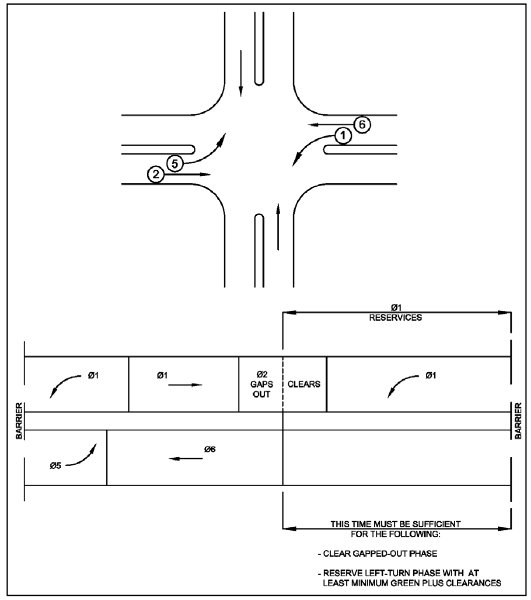The 5-Minute Rule for Safety Network
Table of ContentsThe Ultimate Guide To Safety NetworkThe 6-Minute Rule for Safety NetworkFacts About Safety Network UncoveredThe Ultimate Guide To Safety NetworkExamine This Report on Safety NetworkThe Greatest Guide To Safety Network
Traffic signal controllers alternate service between contradictory traffic motions. The size of time taken to complete one round of service for all clashing motions is called the cycle size, and also the allowance of the cycle size in between the conflicting traffic motions is called the split. Traffic management services.This is called platoon progression and is accomplished by coordinating the procedure of surrounding signals (https://www.jobsrail.com/author/s4fetynetw0rk/). Signal sychronisation is most typically accomplished by operating nearby signals at the same cycle size, with a pre-determined offset between the beginning of the cycle at one intersection as well as the begin of the cycle at the following.
The cycle length, split, and also counter may need to change during the day as web traffic quantities alter. Traffic control. Controllers, for that reason, allow the individual to develop multiple collections of these basic control timing parameters. Each such set is referred to as a timing strategy or timing pattern, as well as one timing strategy or timing pattern functions at any offered time.
Safety Network - An Overview
Traffic signal controllers available today can be classified as period controllers (additionally called pretimed) or stage controllers (also called activated). The former permit the user to split the cycle into any type of number of intervals, with the period of each period being established by the user. The individual after that defines which outcome circuits are turned on during which intervals.
The cycle size amounts to the sum of the interval durations, and all periods are timed sequentially. The individual can additionally define a start-of-cycle balanced out for signal control. The interval durations, result interpretations, cycle size, and also counter can all be differed from one pattern to another, as well as consequently can be differed throughout the day.
If the signal is collaborated, the customer additionally defines a split time for every stage, and also a start-of-cycle countered. The customer designates a phase to a set of suitable lorry and also pedestrian movements. If worked with, the split times for all stages in a ring have to sum to the cycle length.
Getting The Safety Network To Work
Phase controllers make use of obstacles or stage concurrency groups to specify problems in between stages in various tings. Within a concurrency group (in between 2 barriers) the stages in different rings can time independently, yet all rings have to cross the obstacle (relocation to a various stage concurrency group) all at once.
From one pattern to the next, the user might vary the cycle length, offset, split, and also phase series. Stage control is specifically well fit to activated control of typical intersections, especially those with protected left turn activities. Two actuated left turn stages on the very same street can time independently, with claim the westbound turn stage getting much less time than the eastbound in one cycle, and the opposite taking place in the next cycle.
Each phase in a phase controller can be run either pretimed (taken care of time) or actuated. The National Electric Manufacturers Association (NEMA) TS 2 standard defines minimum practical requirements for both period as well as stage controllers. The majority of modern controllers satisfy most or all of these minimum demands as well as a lot of controllers likewise offer additional functionality not yet standard.
The smart Trick of Safety Network That Nobody is Discussing
Such links may be permanent to a remote master or computer system, or short-lived to a notebook computer used by field workers. Ethernet is increasingly being utilized instead of serial interactions. As special serial port might be utilized to communicate with in-cabinet devices in the situation of a serial-bus closet (see NEMA TS 2 and also ATC sections listed below).
If a malfunction is identified, the MMU automatically positions visit this website the signal in an all-red blinking state, bypassing the outcomes of the controller. Modern controllers can sense this problem and report the breakdown state to a master or central computer system. Modern controllers provide the complying with 3 alternative approaches of figuring out which pattern or plan to run: Internal time-of-day routine - the user sets up a schedule that informs the controller when to alter the pattern or strategy, based on the day of the week and also time of the day.
If the controller sheds communications with the resource of pattern commands, it can automatically change to using its interior time-of-day pattern option routine - https://www.seolinksubmit.com/author/s4fetynetw0rk/. The same communications web link is usually utilized to receive status details from the controller, as well as to allow remote changes to controller parameters. It is likewise feasible for the individual to by hand secure a controller into a specific pattern, such that any one of the above pattern options is overlooked.
A Biased View of Safety Network



This is called time base coordination. Ultimately, nevertheless, the controller's clock will drift and also need to be reset to basic time. Clocks can be reset making use of any of the complying with strategies: Manual - occasionally, an individual mosts likely to the controller in the area as well as resets the time according to a precisely established watch or various other resource of conventional time (e.
The Safety Network Ideas
This method is not preferred as it is tiresome, error-prone, and also based on forget. Relying on the design of controller, operationally considerable drift can need manual reset after just numerous weeks of procedure. Hardwire pulse - a master system pulses a hardwire input to the controller at a pre-defined time of day.